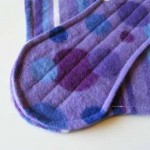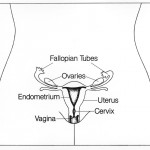Feminine Hygiene Pads – The Differences
 In this day and age in the United States we seem to have a product to fit every choice. Whether it be food, shoes, homes, or even yes, feminine hygiene pads, there is something unique that fits your life style. It can be confusing to sort through all the options but once you find the perfect fit you will probably be a customer for life.
In this day and age in the United States we seem to have a product to fit every choice. Whether it be food, shoes, homes, or even yes, feminine hygiene pads, there is something unique that fits your life style. It can be confusing to sort through all the options but once you find the perfect fit you will probably be a customer for life.
Since I started this business 6 years ago, I’ve become much more aware of the choices in feminine hygiene pads. There is the usual variety in stores that tend toward the disposable. And then there are the natural products found in specialty stores or on the internet. There are also new options like the DivaCup where you can do away with the pads altogether.
With all the options available I thought I would make a list for you and your daughter to explore to discuss which type of pads will be best for her and maybe even for you.
Washable Cloth Menstrual Pads
Companies like Lunapads and GladRags lead this market. Offering reusable all-cotton pads with covers that attach to your underwear (think wings like on disposable pads) these companies attract the eco-conscious consumer. As a mother who used cloth diapers on her babies, I can see the appeal in these products. Not only are you cutting down on waste, but there is a real savings in not buying disposable products every month. The companies also offer bright, cute covers for the pads to appeal to any age.
Menstrual Cup
The DivaCup was first on the scene in this segment of the market. Offering two sizes, based on age and previous childbirth experience, the cup works just like it sounds. Inserted vaginally, the silicone cup holds the menstrual blood inside your body until you empty it. From my own experience, this option is excellent for traveling. No need to carry supplies and it fits neatly into a cloth bag that can go into any travel purse. Menstrual cups are also an excellent option for girls involved in sports as an alternative to tampons. Girls just starting their periods may fill a little unsure about using the cups, but as they get used to their menstrual flow it can be introduced as an option. Different brands of menstrual cups can now be found in most major drugstores.
The Disposable Stuff
This is where the choices become beyond overwhelming as anyone who has ever walked down the feminine care aisle at a drugstore can attest. Finding the right fit can be a challenge. I’m frequently asked by mothers for recommendations on pads that will fit for small tween girls. So far I have not found a good option. Instead I tend to recommend investigating the U by Kotex line of products. Specifically targeted to the younger set, the packaging is cute and cheerful and the website offers advice in finding the perfect match for size and flow.
If you know of any other options in feminine care products who would love to here from you in the comments!

 Throughout our journey in bringing menstruation education to young girls we have found that girls (and their parents) can sometimes be very shy about using the correct words for their female reproductive parts. Even saying the words ‘menstrual period’ can be embarrassing to the girls who would much rather say ‘Aunt Flo’ or ‘being on the rag’.
Throughout our journey in bringing menstruation education to young girls we have found that girls (and their parents) can sometimes be very shy about using the correct words for their female reproductive parts. Even saying the words ‘menstrual period’ can be embarrassing to the girls who would much rather say ‘Aunt Flo’ or ‘being on the rag’.